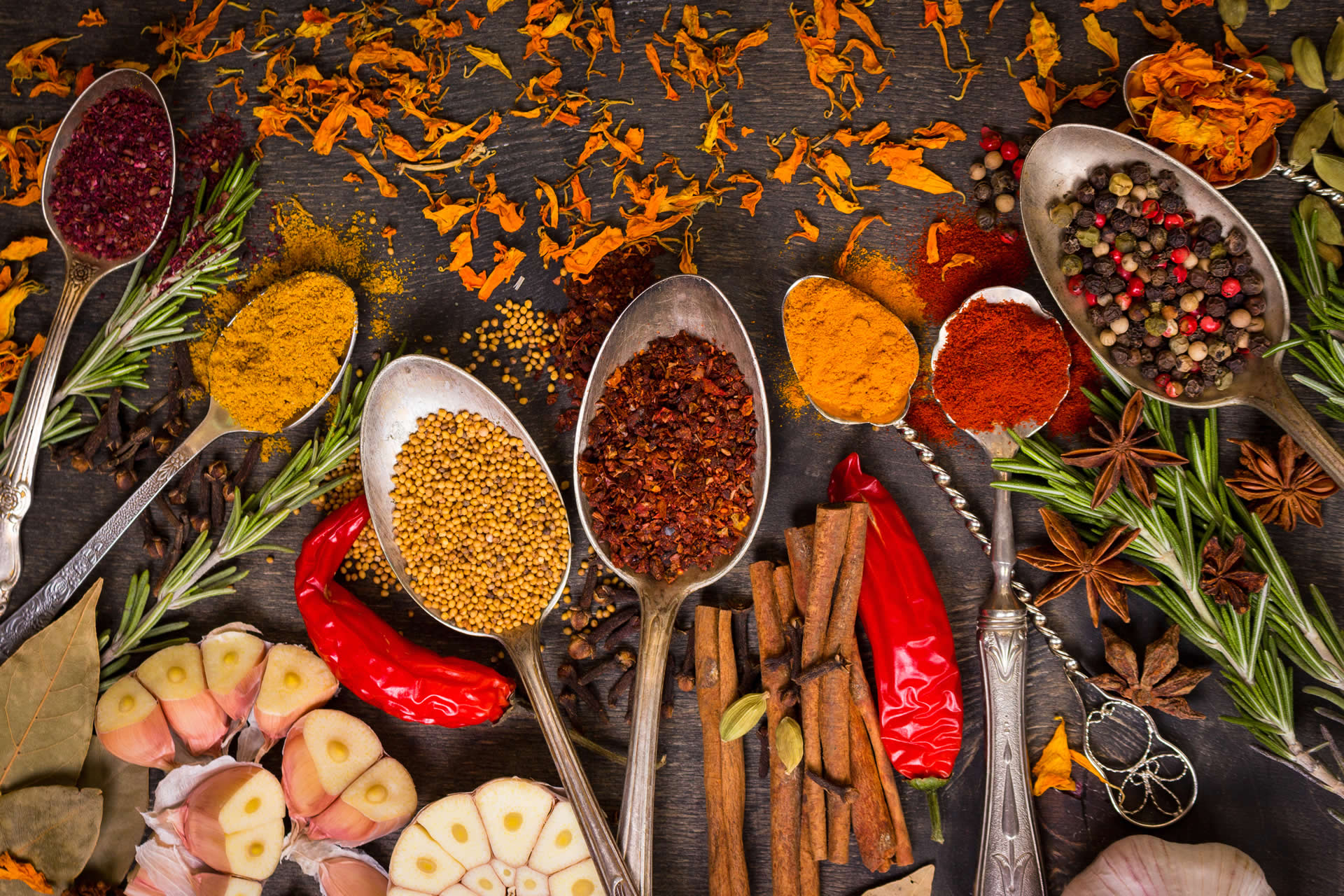
What is Ayurveda?
 Ayurveda is a system of healing the body that was developed by rishis or ‘seers’ during the Indian Vedic era thousands of years ago. It is both a science and an art that explains your unique connection to the environment of which you are an integral part. It has also been called yoga’s ‘sister science’ and is the deepest approach to understanding your body and your mind.
Ayurveda is a system of healing the body that was developed by rishis or ‘seers’ during the Indian Vedic era thousands of years ago. It is both a science and an art that explains your unique connection to the environment of which you are an integral part. It has also been called yoga’s ‘sister science’ and is the deepest approach to understanding your body and your mind.
We all seem to know what to do to be healthy, yet so many of us are so off track and are caught up in cycles of not so very helpful habits. Our thinking many times involves a series of battles that must be won or lost. The ‘this is good, that is bad’ mentality has us swinging from one extreme to another and many folks are confused by the quick fix list approach that has permeated the mainstream information age. A journey with Ayurveda is not dictated by random lists, corporate driven studies, or current fads. And Ayurveda, being deeply in tune with your place in nature, is for people of all ages regardless of cultural backgrounds or religious beliefs.
Ayurveda helps you, step by step, come into a rhythm that will support you on your healing journey and does this by beginning where you are, focusing on lifestyle challenges that may impede your road to true health. Ayurveda utilizes particular foods, food preparations, herbal supplements, breathing techniques, simple yoga postures, gems, oils and scents to get you on track and to help break patterns which are not helpful. The focus is on the positive changes that will be incorporated slowly, thereby being easier to stay with.
How does Ayurveda view imbalance or dis-ease?
 The Sanskrit term dosha refers to forces which represent the 5 elements that are in constant flux in us and in our world. We live in a world of constant change; nothing stays the same in our physical existence. In Ayurveda, all of physical matter is expressed in 5 elements of various proportions.
The Sanskrit term dosha refers to forces which represent the 5 elements that are in constant flux in us and in our world. We live in a world of constant change; nothing stays the same in our physical existence. In Ayurveda, all of physical matter is expressed in 5 elements of various proportions.
These elements are
space (ether), air, fire, water, and earth.
All of life is an expression of these five elements.
Doshas are the forces that work in us and around us. They are present in unique proportions in you, but are subject to change depending on your diet, activities, season, age, and how your mind reacts to stimuli. How the the doshic forces express themselves in your body are as unique as your fingerprints.
There are three main doshas:
Vata: air and ether or that which moves. *Vata represents all movement in your body, the blood coursing through the veins, the force that moves the food and fluid through the digestive system, your heart beating.
Pitta: fire and water or that which digests . *Pitta represents the transformation processes in your body, the liver’s ability to detoxify substances, your stomach transforming food into digestible nutrients, your mind and eyes and their ability to discern.
Kapha: earth and water or that which lubricates. *Kapha represents everything that keeps you moist, fluid, and lubricated, the synovial fluids in your joints, your mucous membrane linings, fatty tissue, the softness of your skin.
In essence, there are 3 basic body/mind types based on these doshas. We all have a combination of these doshas, with one being more dominant.
For example, if you tend towards a thin, lean build, have dry skin or hair, possess a mind that thinks constantly and is ‘spacy’, are a chatty person who talks quickly, possess a variable appetite and reacts to a perceived dangerous situation with fear, don’t sweat a lot, tend towards constipation, love being warm, have the stamina of a deer where energy comes in quick spurts, then your dominant dosha is VATA (air/ether).
If you tend towards a medium build, have oily or thin hair going gray or balding, possess a mind that is always planning ahead or is sharp, have an intense or firey personality, a strong appetite where skipping meals is uncomfortable, reacts to perceived dangerous situations with aggression or anger, sweat with a strong odor, tends toward loose stools, love cool weather, possess good energy that could seem unstoppable, then your dominant dosha is PITTA (fire/water).
But if you’re of a heavier bone build and find it hard to lose weight, your hair is thick and lustrous, possess a mind that wants to take its time, have a sweet (though sometimes ‘sticky’) slow disposition, where skipping a meal is okay with you, reacts to perceived dangerous situations by withdrawing, sweats little, loves warm dry weather, are slow to get started but once you do then your energy is steady, then your dominant dosha is KAPHA (water/earth).
Seasons are also categorized by dosha or element dominance.
For example, winter is the VATA season where it is cold and dry (a quality of air). Everyone knows how to keep balanced in winter as we try and keep warm and introduce moisture to the air. We also crave foods which are warmer and heavier.
Spring is KAPHA season when the earth becomes heavy with moisture (water). We balance ourselves when we keep things moving–think spring cleaning, so that life gets a chance to express itself fully during the hot, summer months. We may crave foods which are lighter and cleansing–think of early garden greens like lettuce that grows easily in the spring.
Summer is hot and is a time when PITTA dominates with the heat and the long days of sun (fire). We’re able to keep in balance by staying cool and by not overheating. And this is the time of year when we prefer cooler foods and colder drinks.
The proportion of the doshic forces outside of our bodies affect the doshas or forces inside our bodies. For example, in winter a VATA (air = cold) type person will tend to be more cold and dry whereas a PITTA (fire = hot) type person will tend to feel invigorated. Ayurveda helps us understand the need for balancing these forces so as to enable the body to resist imbalance and disease.
Life stages also have seasons.
For example, babies and children are in the kapha (spring) stage of life. During late adolescent and our adult lives, we are in the pitta (summer, fiery) time of life. And as we age, we move into the drying stage of life, vata or winter.
Subtle expressions of the doshas also exist. They are called prana, agni, and ojas. These also need to be balanced in order for our bodies and our minds to function at their highest level or their best.
Prana represents our life force and is found in the air we breathe and in the foods we eat. Prana is expressed by our enthusiasm for being alive. We are much more able to utilize prana when we are calm, peaceful, happy or deeply satisfied. Think of a situation when you are totally relaxed. Your breathing is deeper and your body is able to release tensions. If we are in a constant state of heightened alert, we constrict the breath, unknowingly many times, and our bodies tighten, interrupting the flow of prana. This is why deep breathing is helpful to us– it enables pranic flow throughout our bodies.
Prana is also found in fresh foods and is lost in foods that are refrigerated for long periods of time and is almost non-existent in highly processed food-like products.
Agni represents our digestive energy or fire. Picture a large toasted rye cheese sandwich in front of you. Think of eating that sandwich (if you don’t like rye or cheese, it’s going to be even harder on your digestion!) Now imagine the amazing transformation that goes on in your body as that sandwich breaks down in the gut, essential nutrients are extracted and the rest is sent out of the body as waste. That takes an energy that is able to transmute and transform, much like fire is able to transform almost any substance. However, Ayurveda realizes that it’s not just food that we need to digest well for good health. We must also digest events in our lives and things that we are exposed to. Have you ever witnessed a gruesome scene that makes you sick in the stomach? That’s because those scenes are difficult to digest. It’s much easier to digest scenes in nature like a view over a calm lake or the look of distant rolling hills from a protected vantage point. Ayurveda understands that it’s not what you eat or what you see, but how well you digest that matters in overall health. What we don’t digest becomes ama. You can imagine ama as undigested food that clogs or gets stuck in the body, thereby becoming a breeding ground for toxins like fungus, bacteria, or parasites. Undigested images also stay with us and keep us from living fully in the present moment. So in order to be healthy, we need the ability and capacity to digest what we eat and what we take in through our senses.
Ojas represents our immunity and stability, fullness, ‘juiciness‘. All of us have a level of immunity in order to proceed healthily through life. Our body’s immune system is able to resist a great number of environmental influences. Think if we caught every disease, every cold or flu, every malady that we are exposed to. People who work around sick people do not always become ill. This is because ojas gives our body strength and stability to resist negative or unhealthy outside influences. Then why do some folks get sick more often than others? Again, this is not as much related to the germs and viruses in our environment as to the ability of our bodies to resist those unhelpful viruses and germs.
Having a balance of good, strong ojas, adequate agni, and life-giving prana is therefore essential for health of the body.
In Ayurveda, we work on balancing your agni (fire), prana (air), and ojas (water) in order to give your body its maximum chance to heal itself from any imbalance. That imbalance could be long term or recent.
When your body is in balance, your mind feels more peaceful, your digestion of food and images is complete, and your immunity stabilizes you. When you’re feeling more peaceful, clear, and stable, you make better choices that affect not only you, but also those around you.
The role of an Ayurvedic practitioner.
A practitioner takes a history of your past and current tendencies and does a non-invasive physical examination. We access body type by looking at the eyes, taking the pulse, and examining the tongue to see how the doshas are moving in the body. An Ayurvedic practitioner views a person in a holistic manner and spends time talking with a client and looking at the whole person. For example, if a patient presents with vata symptoms of imbalance–they are unable to sleep, are constipated and have a lot of worry, we will first suggest things to balance the air and ether elements especially during the winter (VATA) months. Helpful routines, application of warm oils, eating warm, unctuous foods, adding vata pacifying herbs (through food or supplements) to the diet, and breathing techniques are some examples of how vata can be balanced. We work on getting to the root of the imbalance and help the client avoid health issues down the road since a dosha out of balance for long periods can lead to serious degenerative diseases. Circulatory issues, high blood pressure, motor nerve disorders, sensory deficits, obsessive thoughts and addictions are a few symptoms of vata having gone ‘out of whack’ for long periods of time.
Remember that everyone’s body expresses all three doshas and the above scenario is one common example of vata gone awry.
The knowledge you’ll gain working with your Ayurvedic health practitioner will enable you to become more self-aware. This awareness empowers you as you come to understand your unique constitution and its relationship to the world around.
Ayurveda also embraces most other health care disciplines and weaves them into a treatment plan for the individual. We also recommend that a client not stop seeing a medical doctor if he or she is under his or her care for a particular ailment or for ongoing assessments as this ancient system is considered to be part of an integrated approach to true health.

